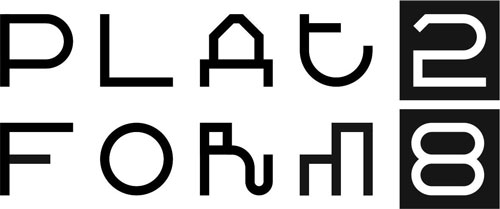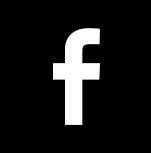
Yes Is More: An Archicomic on Architectural Evolution
November 2009
By Bjarke Ingels
Action-packed architecture!
A manifesto of architecture as seen by the Copenhagen-based group BIG, told in comic book form.
Yes is More is the easily accessible but unremittingly radical manifesto of Copenhagen-based architectural practice Bjarke Ingels Group, or BIG. Unlike a typical architectural monograph, this book uses the comic book format to express its radical agenda for contemporary architecture. It is also the first comprehensive documentation of BIG’s trailblazing practice—where method, process, instruments and concepts are constantly questioned and redefined. Or, as the group itself says: "Historically, architecture has been dominated by two opposing extremes: an avant-garde full of crazy ideas, originating from philosophy or mysticism; and the well organized corporate consultants that build predictable and boring boxes of high standard. Architecture seems entrenched: naively utopian or petrifyingly pragmatic. We believe there is a third way between these diametric opposites: a pragmatic utopian architecture that creates socially, economically and environmentally perfect places as a practical objective. At BIG we are devoted to investing in the overlap between radical and reality. In all our actions we try to move the focus from the little details to the BIG picture." Bjarke Ingels attracts highly talented co-workers, but also gifted and ambitious clients from all over the world. He then creates intelligent synergies from wild energies and unforeseen dynamics, and transforms them into surprising, functional, valuable and beautiful solutions to the specific and complex challenges in each task. BIG projects have won awards from the Royal Academy of Fine Arts, and the Special Jury Prize at the Venice Architecture Biennale, as well as many other international prizes. Yes is More is a play on words that represents the company’s ethos and sums up its irreverent attitude towards excessive formalism, and its determination to involved the population at large in its creations. As an extension of its methods and results, its debut monograph uses the most approachable and populist means of communication available—the cartoon.
- 20/20: Editorial takes on Architectural discourse
- A Question Of Qualities: Essays In Architecture
- AA Files #57
- AA Files #58
- AA Files #59
- AA Files #60
- AA Files #61
- AA Files #62
- AA Files #63
- AA Files #64
- AA Files #65
- AA Files #66
- AA Files #67
- AA Files #68
- AA Files #69
- AA Files #70
- Adolf Loos
- Architecture After Revolution
- Autonomy and Ideology: Positioning an Avant-Garde in America
- Best of Austria Architecture 2006_07
- BIG
- Big, Hot To Cold: An Odyssey Of Architectural Adaptation
- Black + Architecture
- Cedric Price: Potteries Thinkbelt: SuperCrit #1
- Citizens of No Place: An Architectural Graphic Novel
- Content
- Deep Veils
- Detail in Contemporary Bar and Restaurant Design
- Detail in Contemporary Timber Architecture
- Details in Contemporary Residential Architecture
- Diagram Diaries
- Disegno #12
- domus 1950s
- Ehituskunst 2013: ... like dancing about architecture
- Ehituskunst 2015: What do you want, Brick?
- Elements
- Elements of Venice
- Floor Plan Manual Housing
- Geographies of Information
- Hariri & Hariri: Work in Progress
- How to Make a Japanese House
- Interactive Architecture: Adaptive World
- Inventario 03: Everything Is A Project
- Junya Ishigami: How Small? How Vast? How Architecture Grows
- Jutaku: Japanese Houses
- KM3-Excursions on Capacities
- Learning from Las Vegas
- Made in Tokyo
- Material Matters: New Materials in Design
- Material World 3: Innovative Materials for Architecture and Design
- Materials for Architectural Design
- Matter: Material Processes in Architectural Production
- Mobile Architecture
- MVRDV: Works and Projects 1991-2006
- Narrow Houses: New Directions in Efficient Design
- New Urban Housing
- OASE 90: What Is Good Architecture?
- OASE 94: O.M.A. The First Decade
- Pamphlet Architecture 24: Some Among Them Are Killers: Unmanaged Landscapes for Non-U.S. Military and Government Users
- Pamphlet Architecture 25: Gravity
- Pamphlet Architecture 27: Tooling
- Pamphlet Architecture 28: Augmented Landscapes
- Pamphlet Architecture 29: Ambiguous Spaces
- Pamphlet Architecture 30: Coupling: Strategies for Infrastructural Opportunism
- Pamphlet Architecture 31: New Haiti Villages
- Pamphlet Architecture 32: Resilience
- Pamphlet Architecture 33: Islands and Atolls
- Pamphlet Architecture 34: Fathoming the Unfathomable
- Project of Autonomy: Politics and Architecture Within and Against Capitalism
- Richard Rogers: Architecture of the Future
- Robert Venturi and Denise Scott Brown: Learning from Las Vegas: SuperCrit #2
- SAN ROCCO #05 SCARY ARCHITECTS
- SAN ROCCO #08 WHAT'S WRONG WITH THE PRIMITIVE HUT?
- SAN ROCCO #09 MONKS AND MONKEYS
- SAN ROCCO #10 ECOLOGY
- SAN ROCCO #11 HAPPY BIRTHDAY BRAMANTE!
- Softspace: From a Representation of Form to a Simulation of Space
- Such Places as Memory: Poems 1953-1996
- Tallinn Architecture Biennale 2013: Recycling Socialism
- The 21st Century Office
- The Metapolis Dictionary of Advanced Architecture: City, Technology and Society in the Information Age
- Transmaterial 2: A Catalog Of Materials That Redefine Our Physical Environment
- Transmaterial 3: A Catalog of Materials that Redefine our Physical Environment
- Transmaterial: A Catalog of Materials That Redefine our Physical Environment
- Yes Is More: An Archicomic on Architectural Evolution


